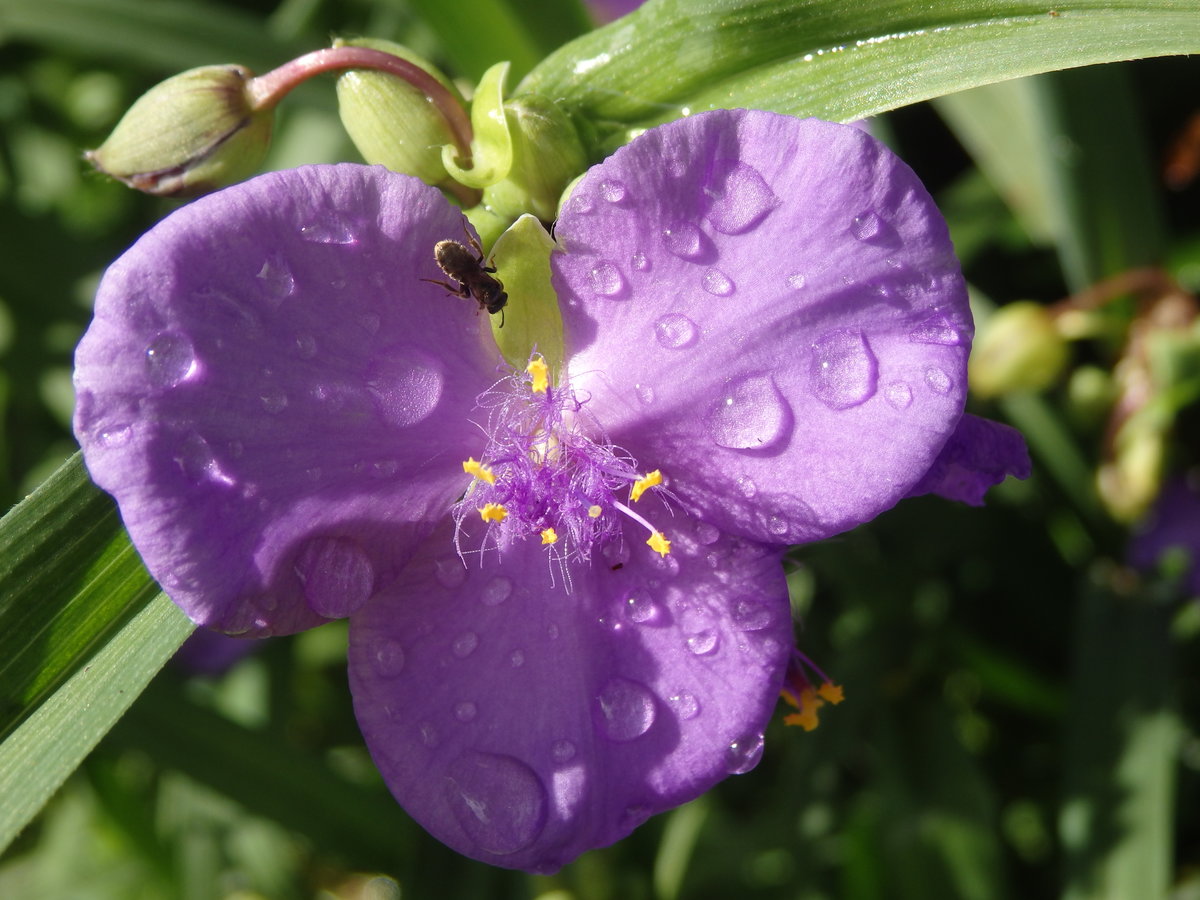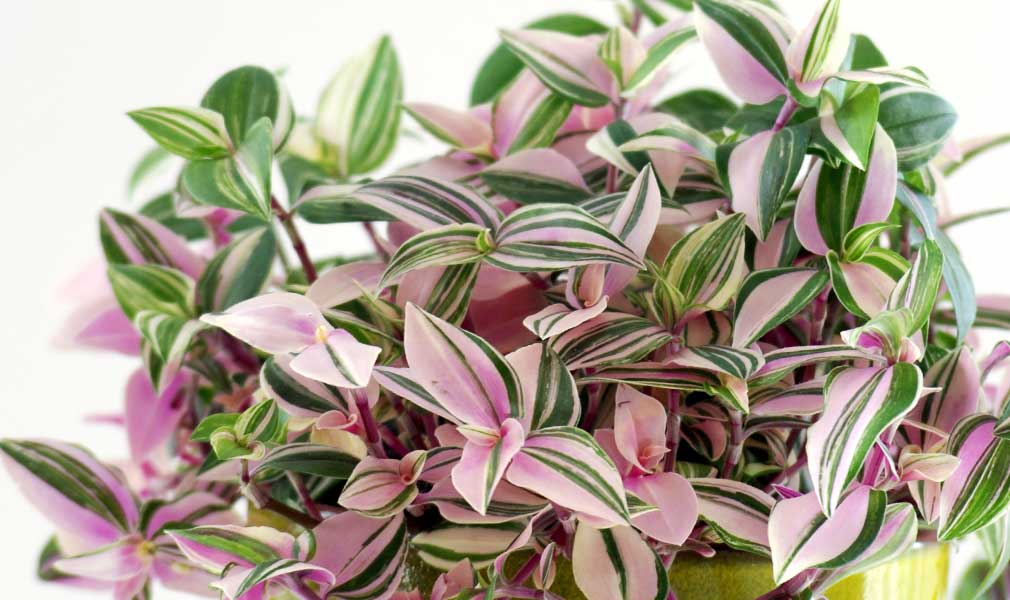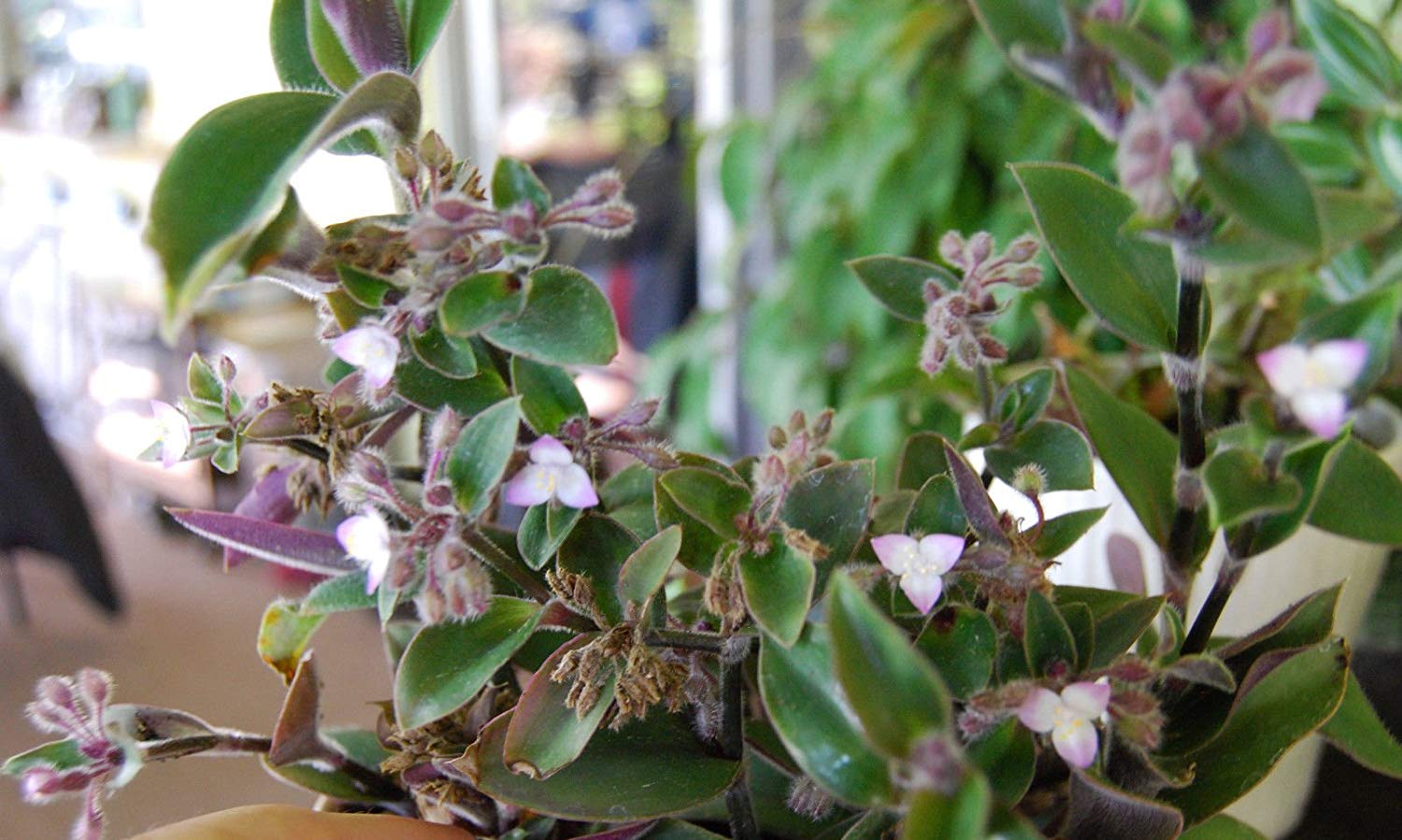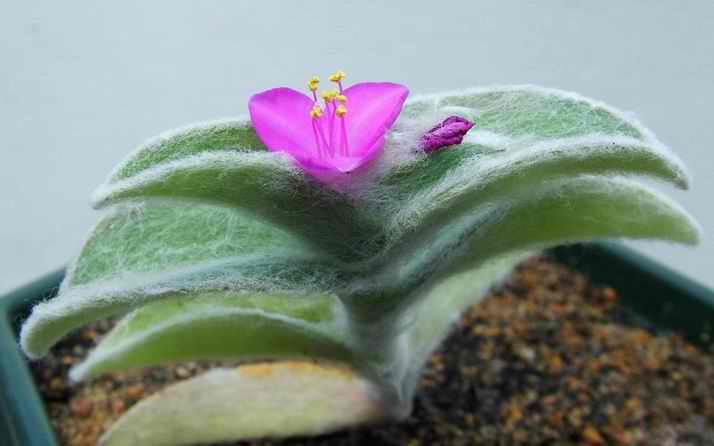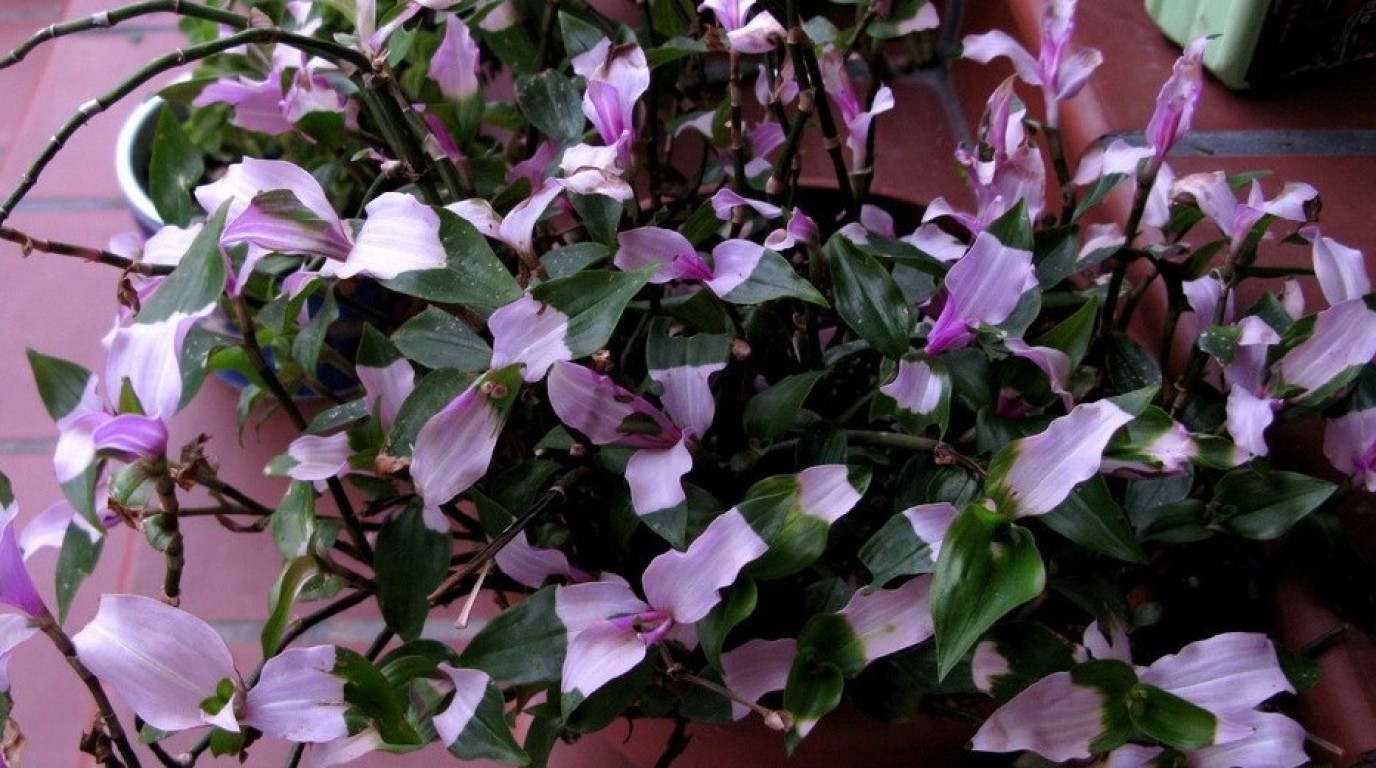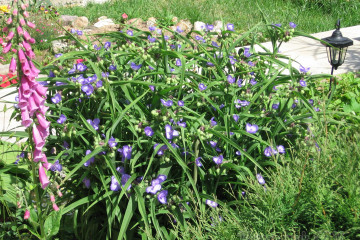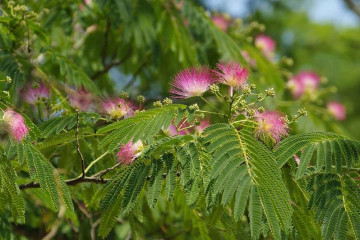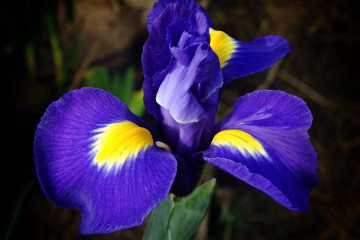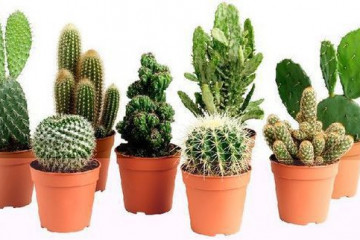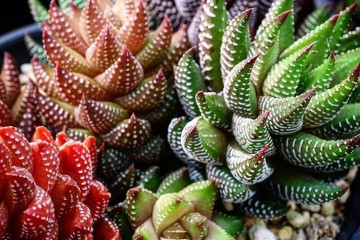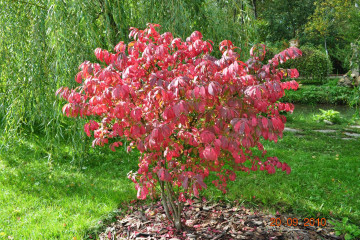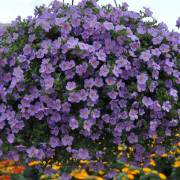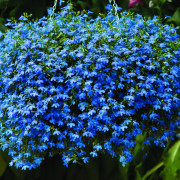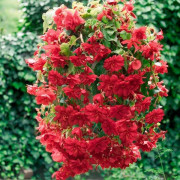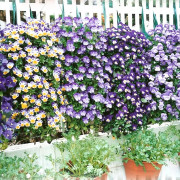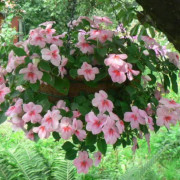Tradescantia - species of ampelous plants Anderson, Zebrina and others
Content:
- How Tradescantia grows
- Tradescantia: types and diversity
- Virginia Tradescantia
- Tradescantia white-flowered
- Tradescantia multicolored
- Small-leaved Tradescantia
- Tradescantia Andersoniana
- Tradescantia Blossfeld
- Tradescantia Sillamontana
- Thick-leaved tradescantia
- Tradescantia White Doll
- Tradescantia sitara
- Tradescantia quadricolor
- Tradescantia Blush Bride
- Setcreasea purpurea
- Tradescantia striped
Tradescantia is a genus of perennial evergreen herbaceous plants, which belongs to the Kommelin family. Many varieties of Tradescantia are actively used in home floriculture. The culture is grown as an ampelous plant or serves as a ground cover species for decorating garden plots. The place of origin of the flower is South America. Tradescantia is also found on other continents - in areas with a temperate or tropical climate. It has medicinal properties, is undemanding in care, blooms regularly and pleases others with its beauty.
How Tradescantia grows
The plant is an evergreen flowering perennial with rather long creeping or erect shoots. The arrangement of the leaves is alternate, the shape can be different: ovoid, oval, elongated. The plates are located on short petioles or are attached to the base themselves. The color is of two types - monophonic or variegated with lilac, green, pinkish shades. Some species have pubescent leaf plates, others are completely smooth.
The flowering period is characterized by the appearance of 2-3 small flowers of a white or purple hue on the stems. Flowering can last for several months, while the life of one flower lasts only one day. Corollas consist of 3 loose petals surrounding long stamens pubescent with silvery hair (6-7 pcs.) With large anthers of bright yellow color.
The flower is planted in moist, loose enough, nutrient-rich soil with good drainage.
Tradescantia: types and diversity
The genus Tradescantia includes about 75 species. The variety of cultural forms is explained by the widespread distribution of the flower in the wild, as well as by the work of breeders who are tirelessly engaged in the development of new varieties. More about what Tradescantia looks like and its most popular forms will be discussed later.
Virginia Tradescantia
The plant has branched erect shoots. The height of the bush reaches half a meter. The leaves are narrow, about 20 cm long, about 4 cm wide. Pink, blue or purple flowers are collected in umbellate inflorescences. The culture begins to bloom in July and ends two months later.
Popular varieties:
- Precious stones;
- Rose flower;
- Rubra;
- Coerulea.
Tradescantia white-flowered
Wide (about 6 cm) leaves are characterized by an oval or ovoid shape with a pointed end. The length of the plate is about 2.5 cm. The surface is smooth, the color can be monotonous or variegated, and striped varieties are also found. The upper part of the stems is decorated with small white flowers, collected in umbellate inflorescences. Among the popular varieties of this type are:
- Tricolor.Green leaves are covered with stripes of white, lilac and pink flowers;
- Aurea. Leaves are yellow with green stripes.
Tradescantia multicolored
She is a covered Tradescantia, reo. This species was assigned to the genus Tradescantia not so long ago. Due to the large external difference with other cultures of this classification group, the multicolored Tradescantia was singled out as a separate genus Reo, belonging to the Commelin family.
Multicolored Tradescantia is common in Central America, Mexico, and the Antilles. Due to its high decorative properties, unpretentiousness and compactness, the plant is used to create landscape design (winter and summer gardens, greenhouses), as well as decorate offices (for example, editorial offices of magazines), indoor and other premises.
The height of the bush reaches 40 cm. The stems branch out, forming a natural and at the same time original form of the plant. Over time, the lower leaves begin to fall off, and then the flower becomes like a palm tree.
Flower tissues are covered with red-orange villi.
The thick, fleshy stems have smooth, lanceolate leaves collected in a dense rosette, the width of which varies from 5 to 8 cm, and the length is about 30 cm. On the outside they are painted dark green, the inner surface is violet-red with pronounced stripes.
The flowers are small, white, wrapped in a purple stipule of a scaphoid shape. For this reason, the second name of Tradescantia sounds like the boat of Moses.
Flowering is short and does not depend on the season, however, it can begin only in conditions of sufficient lighting.
Due to the weak root system, the flower must be transplanted very carefully and the soil must not dry out.
Small-leaved Tradescantia
Shoots are lilac-brown, covered with many small ovoid leaves with a smooth, glossy surface. The outer side of the leaf plates is painted dark green, the back side is purple.
Tradescantia Andersoniana
The plant was obtained as a result of selection work with small-leaved Tradescantia.
Stems are erect with branches. The height of the bush is 30-80 cm. The knotty shoots are covered with long narrow leaves. The flowers, consisting of three petals, are painted in several tones at once - purple, pink and white.
Tradescantia Blossfeld
This species has dense creeping shoots, covered with a green-red skin. Sessile dark green oval leaves with a pointed end grow 4-8 cm in length. The width of the leaf plates is 1-3 cm. The surface of the plates is reddish on the outside and purple on the inside. The seamy surface is densely covered with villi. The inflorescences are located in the axils and consist of three purple petals. Stamens and sepals are covered with silvery hair.
Tradescantia Sillamontana
It grows only in one place - in the Mexican state of Nuevo Leon. The height of the bush reaches 30-40 cm, when grown in a container - about 20 cm.The width of an adult flower is 40-50 cm.
The stalks of Tradescantia are covered with fluff, which is why sillamontana was nicknamed white velveteen.
The arrangement of dense oval leaves is alternate, the length of each plate can reach from 3 to 7 cm. The outer side has an olive-silver color, in bright light it acquires a purple tint with a red tint. The inner surface of the leaves is purple-violet.Three-petal flowers up to 3 cm in diameter are located on short single peduncles, painted in a rich lilac-pink hue.
The flowering period occurs in July, but it can start earlier (in the first days of summer and even in spring) in the presence of bright lighting, warmth and sufficient feeding.
Thick-leaved tradescantia
The leaves are dense, have an elongated shape, reach 15 cm in length, they are connected to the shoot with one base (practically without a petiole). The arrangement of the leaves is spiral. The edges of the plate are decorated with contrasting edging.
The plant needs more intense lighting than other types of tradescantia. In this case, a little darkening is also necessary, since too bright light leads to fading of the leaves.
Tradescantia White Doll
The main distinguishing feature of this species is its bright snow-white bloom.
Tradescantia sitara
This species is characterized by erect shoots and lanceolate foliage. The front side of the plates is colored yellow or green, and the back side can be purple, red or purple.
Tradescantia quadricolor
This species includes the Zebrin Tradiscantia. Differs in four-colored leaves, the palette of which includes pink, silver, whitish and dark green tones.
Tradescantia Blush Bride
The plant has flowers of a pearlescent hue (giving it resemblance to an orchid), which stand out brightly against the background of bronze leaves with a glossy sheen. Flowering occurs from June to August. The height of the bush varies from 35 to 40 cm.
Setcreasea purpurea
She is a purple, pale Tradescantia. A wild crop found on the Gulf Coast. The plant has dense creeping shoots, reaching a length of 1 m. The arrangement of the leaves is alternate, lanceolate, up to 10 cm in length. The color of the outer smooth surface is green-purple. The inner side, covered with a small fluff, is painted purple. Long-lasting flowering begins in mid-spring and ends in late summer. The flowers are purple-pink with three wide petals.
Tradescantia striped
Another name is hanging zebrina. This species is characterized by creeping shoots, and therefore the culture is often grown as an ampelous one. There are also varieties with erect stems. Tradescantia zebrina violet has rather large ovoid leaves, which are located on short petioles. The outer side is decorated with longitudinal silvery stripes, the reverse has a monochromatic red-purple color. The flowers are small, purple or violet.
Other common types and varieties of tradescantia are:
- riverside;
- white-flowered;
- myrtle;
- variegated.
Tradescantia is represented by an amazing variety of species and varieties, thanks to which each grower can easily choose the best option for himself.
